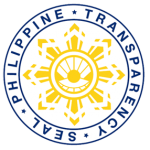PH can now export livestock, pork products

Filipino livestock and hog raisers, and meat processors can now export ‘Pinoy’ livestock and pork products to the rest of the world, as the entire Philippines was recently certified free from the dreaded foot and mouth disease (FMD) without vaccination by the Office International des Epizooties (OIE) or World Organization for Animal Health. Agriculture […]
Filipino dairy farmers: emerging contributors to the economy

Filipino dairy farmers are now in a position to raise their status from a seemingly lowly profession to being profoundly proud of their collective contribution to the economy, according to Agriculture Secretary Proceso J. Alcala. This development comes on the heels of various interventions being done to move the steadily growing dairy industry at a […]
Carabaos are stars, too, in festivals

The Philippine Carabao Center (PCC) continues to move forward with its effort to upgrade the genetic potential of the Philippine swamp buffalo, which is the type commonly used for draft power, for better productivity in terms of producing milk and meat. In all these, however, PCC is also cognizant of the other facet of the […]
DairyConPhil head says dairying is good poverty antidote

Danilo V. Fausto, president of the Dairy Confederation of the Philippines (DairyConPhil), has declared that the local dairy industry has nowhere else to go but forward. DairyConPhil is the umbrella organization of dairy farmers and other stakeholders in the industry who are members of 12 dairy federations and associations in various parts of the country. […]
San Agustin town pushes carabao-based enterprise development

For years, farmers in San Agustin town in Isabela regarded their crossbred carabaos as their “champion allies” in various farm works. Today, these animals are valued not only for their draft ability but more importantly as milk producers that provide cash flow and a sense of empowerment. With the continuing combined efforts of the Philippine […]
Role of agri-tourism in national development cited

President Aquino is optimistic about the potentials of agri-tourism in the country, citing the availability of needed manpower and the innate hospitality of Filipinos. The chief executive expressed his view in a message read for him by DA undersecretary for field operations Joel Rudinas at the start of the 1st International Agriculture and Tourism Expo […]
PCC scientist is NAST 2011 OYS awardee

Dr. Claro N. Mingala, a scientist of the Philippine Carabao Center (PCC), was recently adjudged as one of the “2011 Outstanding Young Scientist” awardees. The Outstanding Young Scientist (OYS) award is given to young Filipino scientists who make significant contributions to science and technology. The award is a brainchild of the National Academy of Science […]











